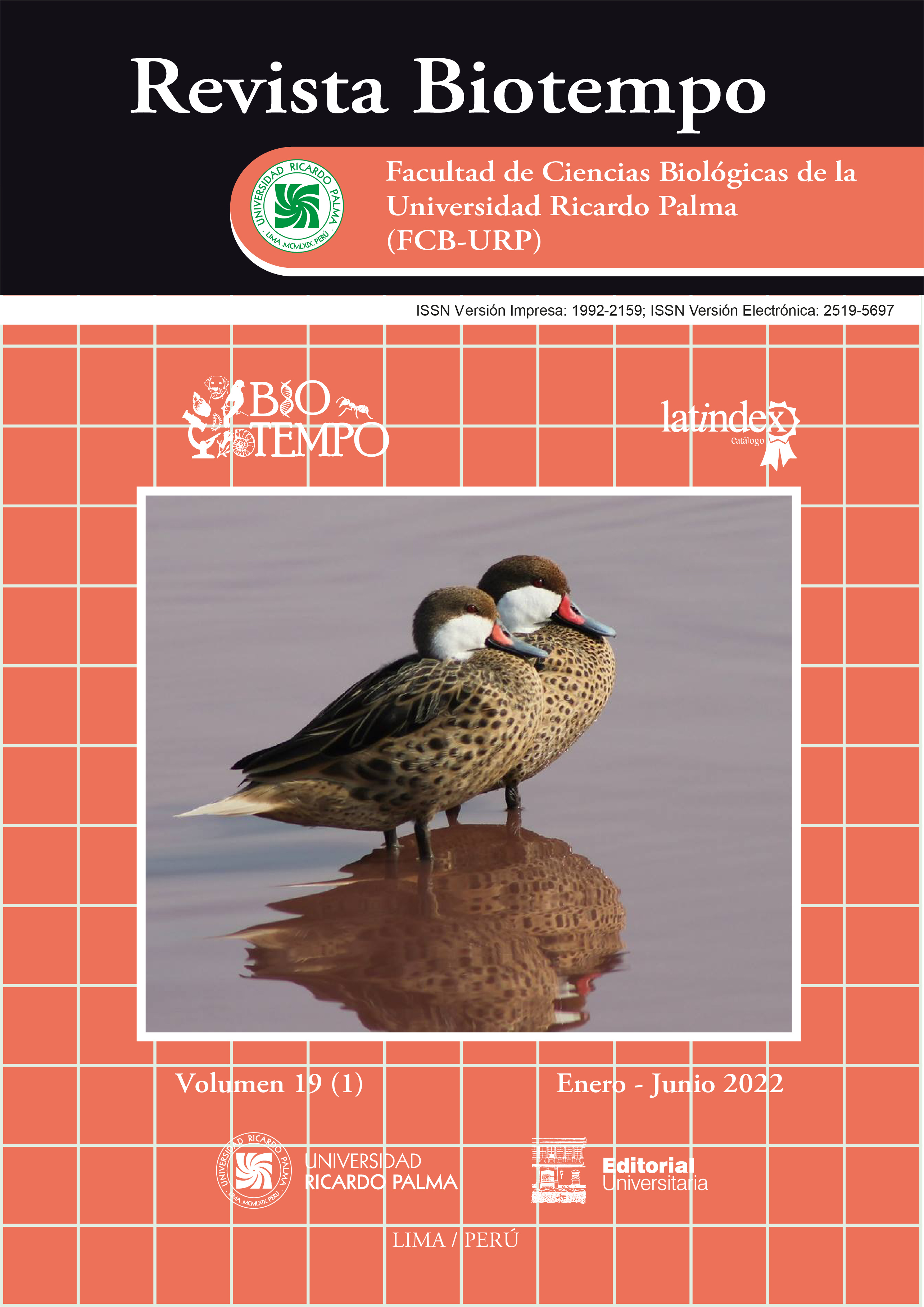FIRST PRE-LARVARY FEEDING OF TRICHOMYCTERUS RIVULATUS VALENCIENNES, 1846 (SUCHE) UNDER CONTROLLED CONDITIONS
DOI:
https://doi.org/10.31381/biotempo.v19i1.4813Keywords:
aquaculture, feeding, growing, live dietAbstract
The larval stage is a complex phase in aquaculture and living organisms are needed for the survival and development of the fish. The aim of the study was to describe the length of live-feeding suche (Trichomycterus rivalatus Valenciennes, 1846) in Lake Titicaca, Peru. The study was carried out in the prototype culture laboratory of the Fundación Titicaca Perú (FUNTI-PERU), Centro Poblado de Ichu, Puno. 900 pre-larvae of T. rivulatus were used as biological material, distributed in three experimental treatments with three replicates of 100 individuals each. The pre-larvae were obtained after 24 hours post-hatching that belonged to the same spawning. Temperature, dissolved oxygen and pH were measured as physical-chemical parameters of water quality. Survival was evaluated before the consumption of the yolk sac, nauplii of Artemia salina and cladocerans. Total length was measured on the 5th day of hatching. The water temperature was 14°C, the dissolved oxygen was between 6.18-6.23 and the pH around 7.6. Survival was almost 100% and the greatest length was observed with A. salina feeding (8.5 > 8.0 mm), where there were statistically significant differences. It is concluded that the length of 8.5 mm in T. rivalatus during the pre-larval period requires that the physical-chemical experimental conditions with a temperature of 14°C, dissolved oxygen in the range 6.18-6.23 and pH around of 7.6 which will guarantee almost total survival, if the efficient feeding strategy is with artemia nauplii.










